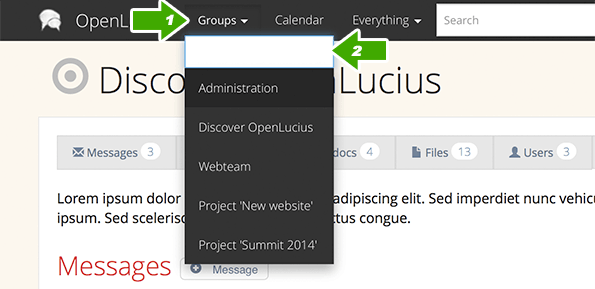
Upgrade Your Drupal Skills
We trained 1,000+ Drupal Developers over the last decade.
See Advanced Courses NAH, I know EnoughWhy the Bootstrap HTML framework in Drupal & OpenLucius

The Bootstrap HTML framework in Drupal, we love it. That’s why we build the front-end of Drupal distribution OpenLucius with it. So we love it, but why is that?
There are alternatives to integrate in Drupal websites. Below we will give you a few reasons why we currently prefer the Bootstrap framework.
Why a HTML framework
First of all, why should you use a HTML framework? These possibilities also exist:
1) Write everything fully by hand:
Nowadays responsiveness is required with almost every new website. Bootstrap is offering cross-browser compatibility for this. To build the required responsiveness every time from scratch would make no sense.
2) Ready-made Drupal themes
You can download free Drupal themes or buy them ready-made. This will take you quickly in the right direction, but ‘the devil is in the details’. The final details are usually difficult, but necessary to make your desired layout. The problems are usually caused by not knowing the code and the code is often not scalable designed for your purposes. It can become a kind of Rube goldberg machine to you.
Why Bootstrap
So a HTML framework is our weapon of choice. Specifically Bootstrap, 5 reasons why:
#1) Good documentation
It has become a widely used framework in Drupal. The Drupal Bootstrap base theme has currently almost 300.000 downloads and 50.000 installations. It is not only used in the Drupal community, other popular CMS systems, like Wordpress, also make extensive use of it.
As a result of this broad implementation, a lot of documentation is available and most questions are already answered on forums like StackOverflow.
#2) Good Drupal integration
Since we are a Drupal shop, scalability and flexibility of the integration are necessary. And of course this is offered, the technique of Drupal Bootstrap basis theme is excellent. It is even integrated with Bootswatch themes, so you can instantly choose from 14 ready-made templates.
We are gratefully using this in our Drupal distribution OpenLucius.
#3) Many ready-made free templates
Because it is used worldwide, there are many websites that offer paid and unpaid Bootstrap HTML templates, for example:
#4) Many components (snippets) are already available
Websites usually consist of similar content: homepage, list pages, news items, blog, contact, drop down menu, slider with pictures etc. But also think of elements such as a profile page, a timeline, or a login screen.
There are many websites that offer such components (snippets) within the Bootstrap HTML framework. Some examples:
A timeline
- http://bootsnipp.com/snippets/featured/timeline-responsive
- http://bootsnipp.com/snippets/featured/two-column-timeline-not-responsive
A profile page
A useful dropdown selector with filter function
We have used these in OpenLucius:

Data tables
Data tables are providing performance optimalisation compared to standard Drupal Views. Data tables are loading all ‘tabular data’ and creates pages using jQuery. This will make a difference in the server requests when requesting each new page.
#5) Integrates with WYSIWYG
When you are working with content managers, you like them to see the text format as the visitor gets to see them. In other words: the text in the wyiwyg editor must be consistent with the front end. With Bootstrap this is relatively simple.
Relevant Drupal modules
Get started with Bootstrap in Drupal, this will give you a kick start:
And many more. Not everything in this list is bootstrap integration, it also contains results of modules that say something about ‘Drupal’s bootstrap process’. But that’s another chapter :)
Wrap up
Alright, that’s it. As always, don’t hesitate to contact me in case of questions or feedback!
— Cheers, Joris
About Drupal Sun
Drupal Sun is an Evolving Web project. It allows you to:
- Do full-text search on all the articles in Drupal Planet (thanks to Apache Solr)
- Facet based on tags, author, or feed
- Flip through articles quickly (with j/k or arrow keys) to find what you're interested in
- View the entire article text inline, or in the context of the site where it was created
See the blog post at Evolving Web

